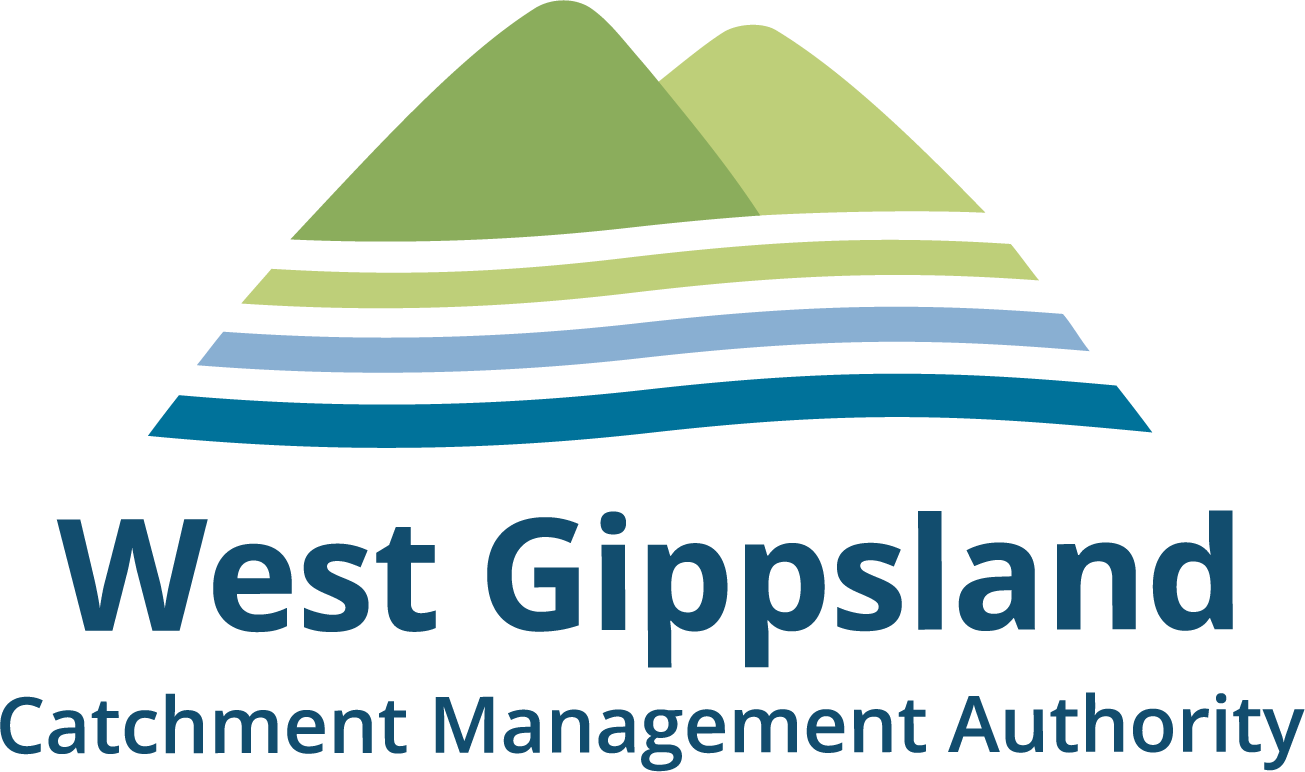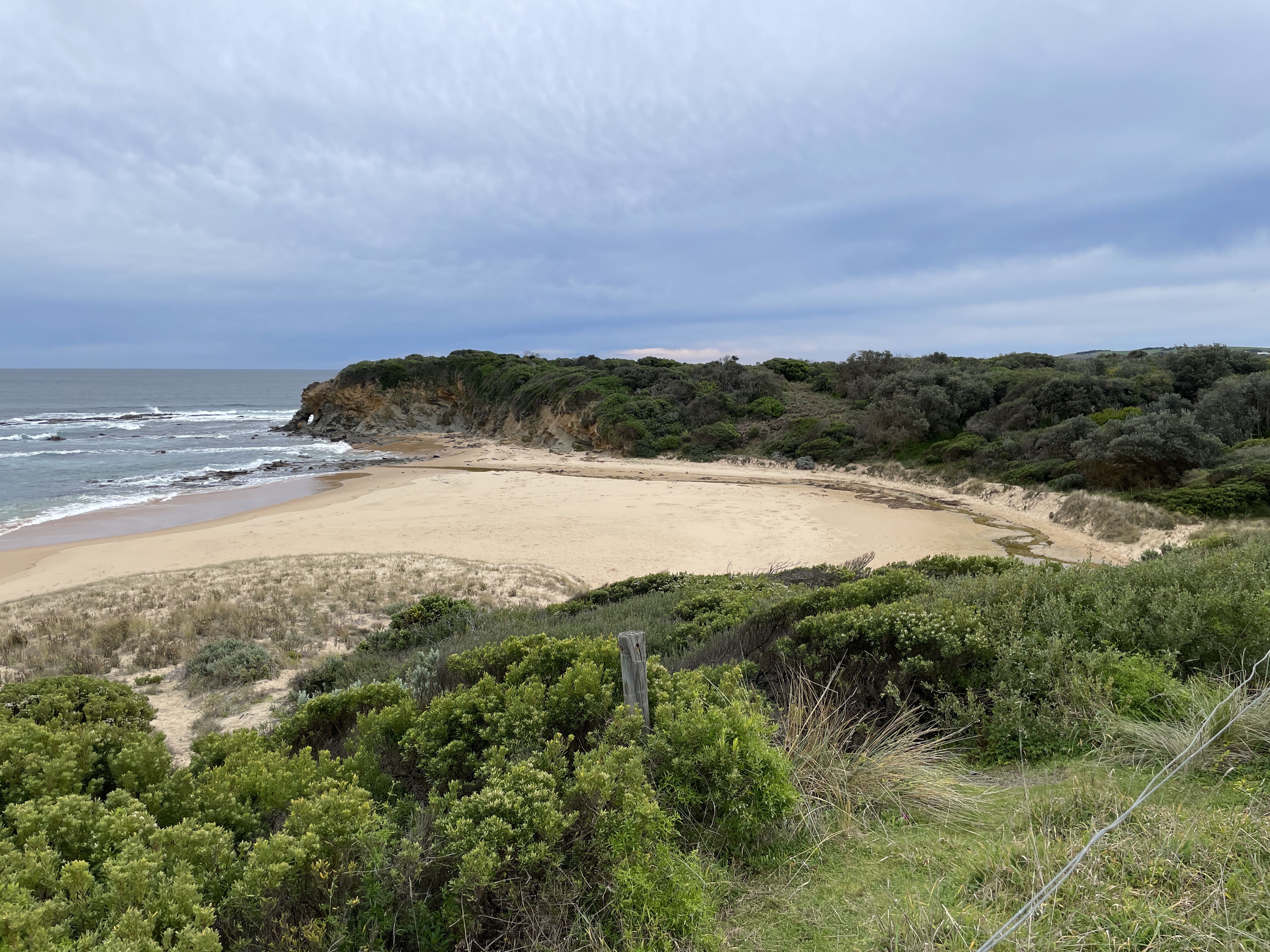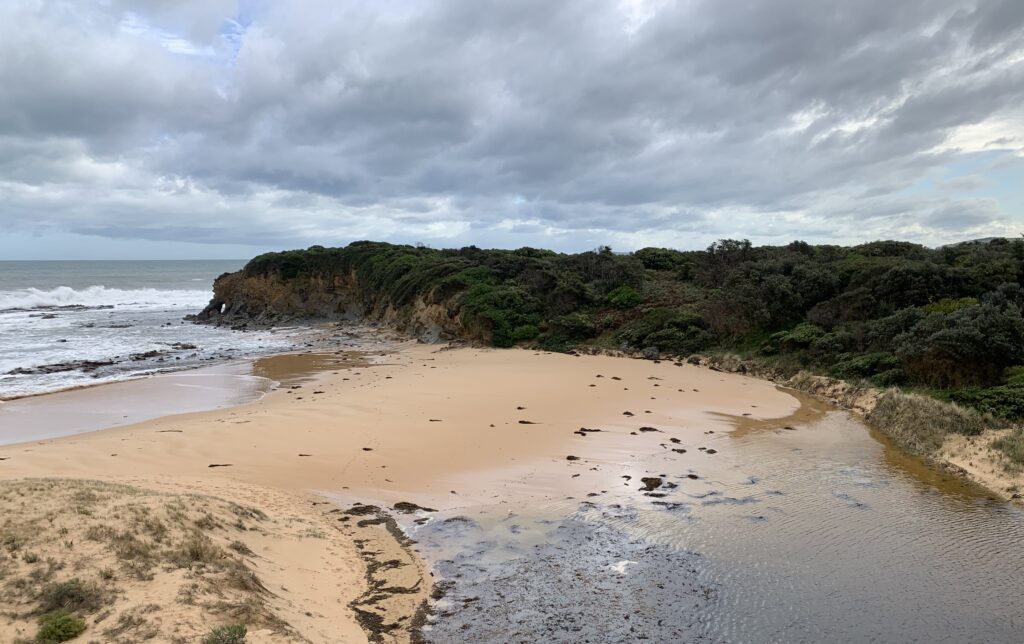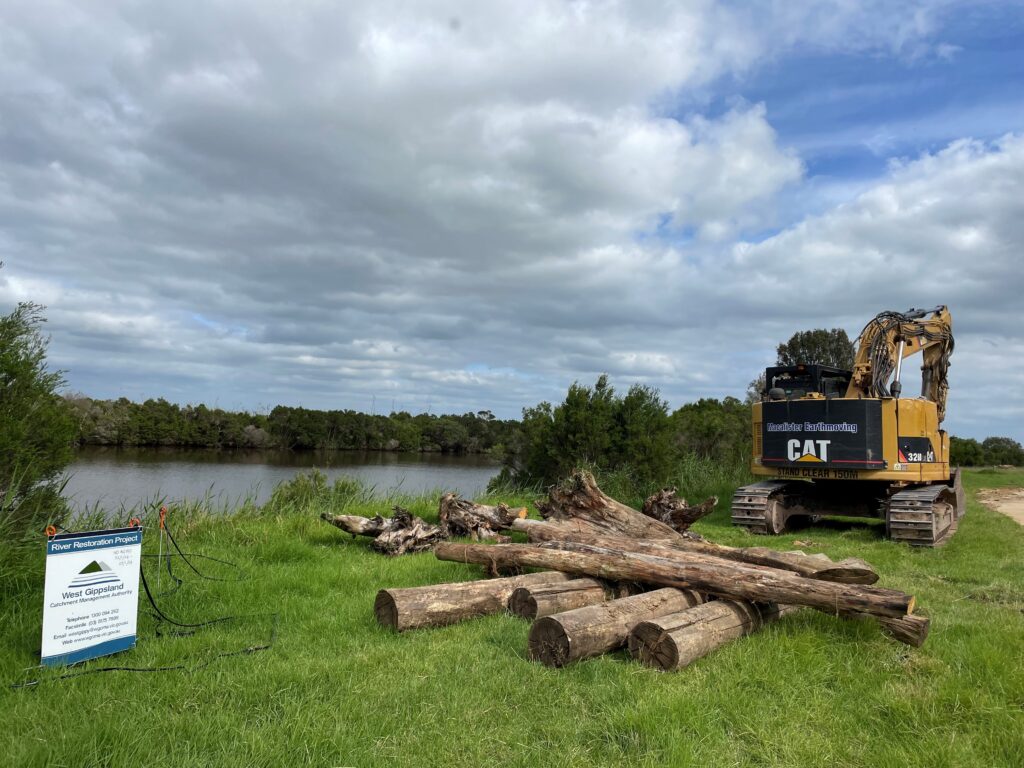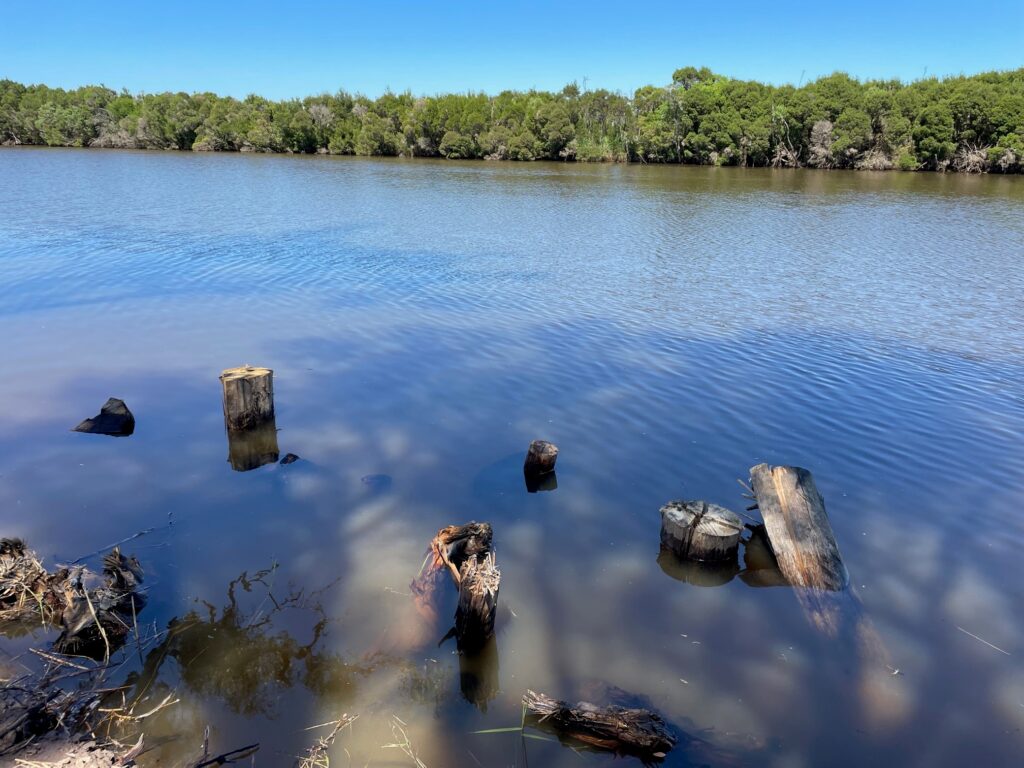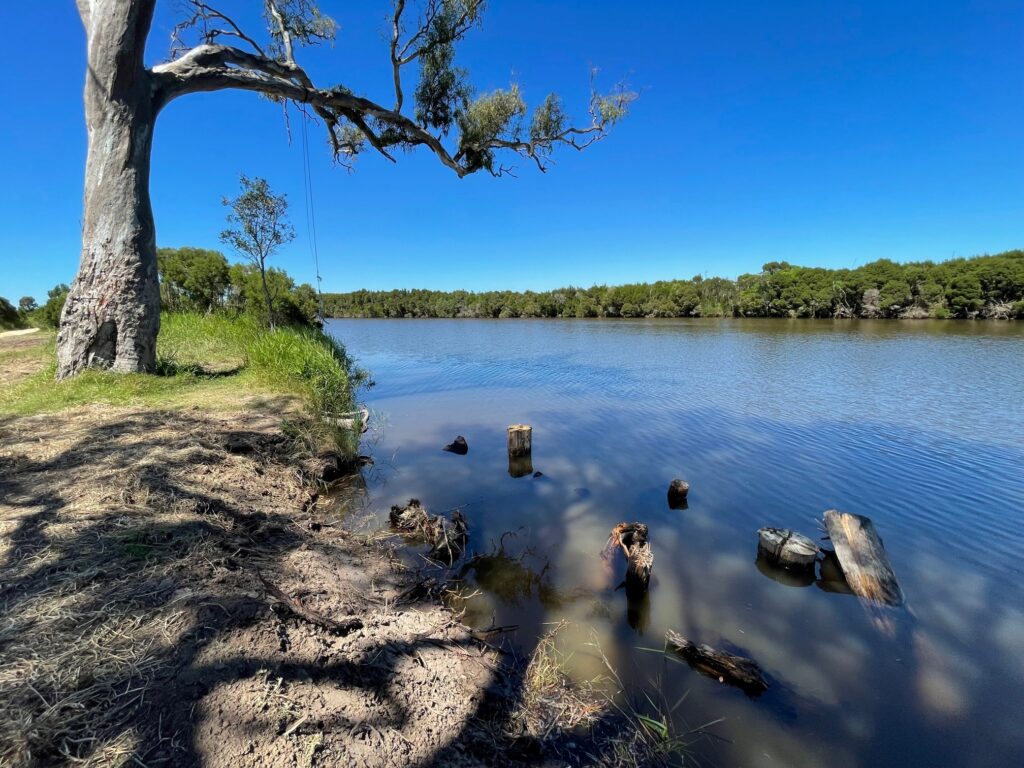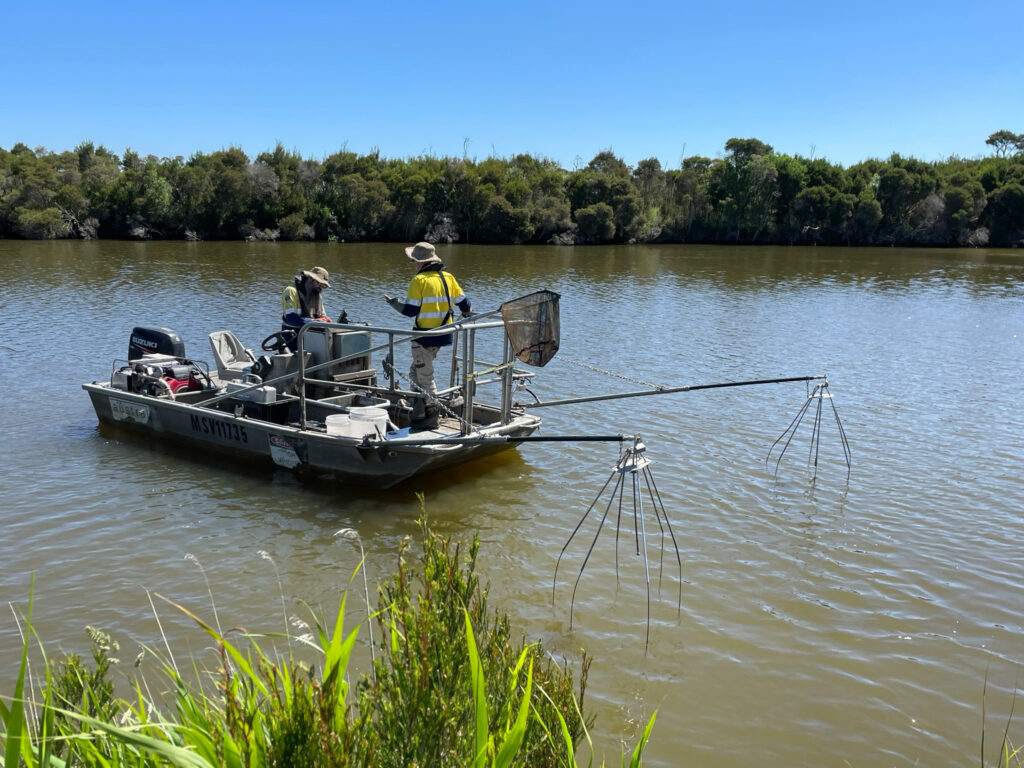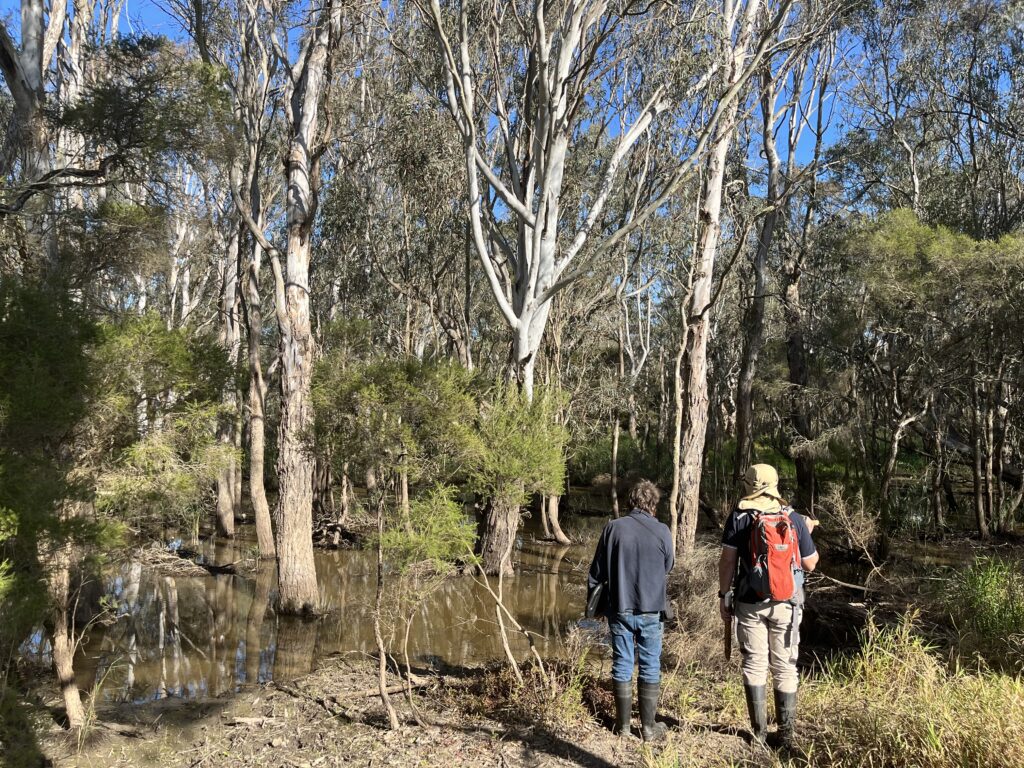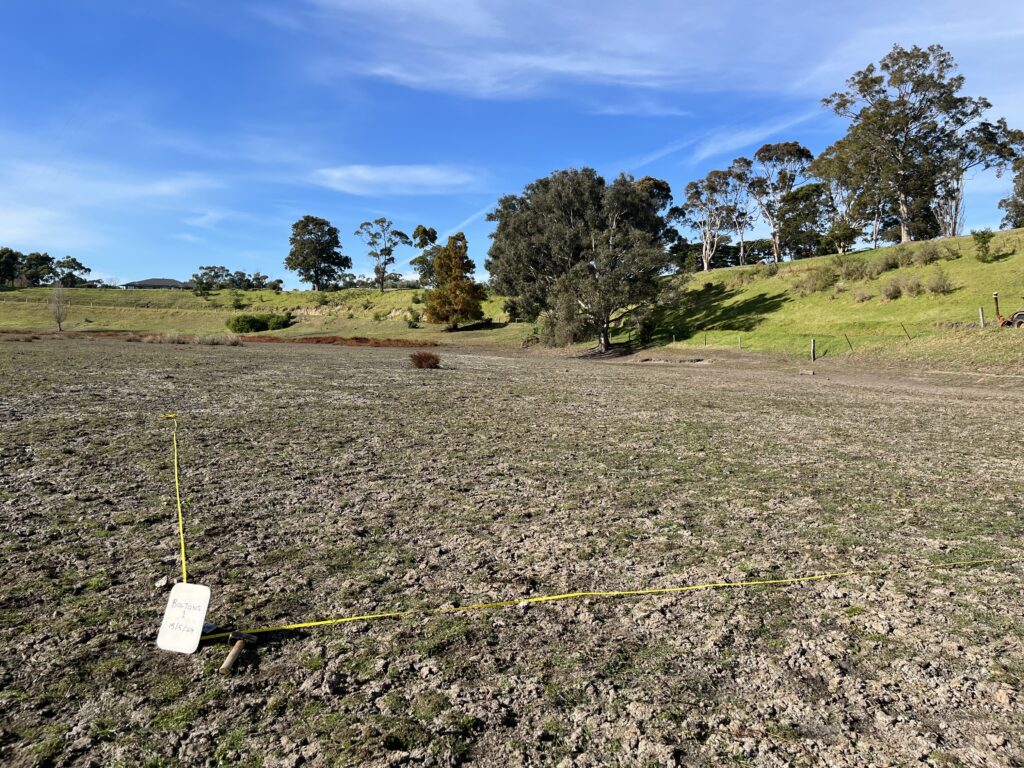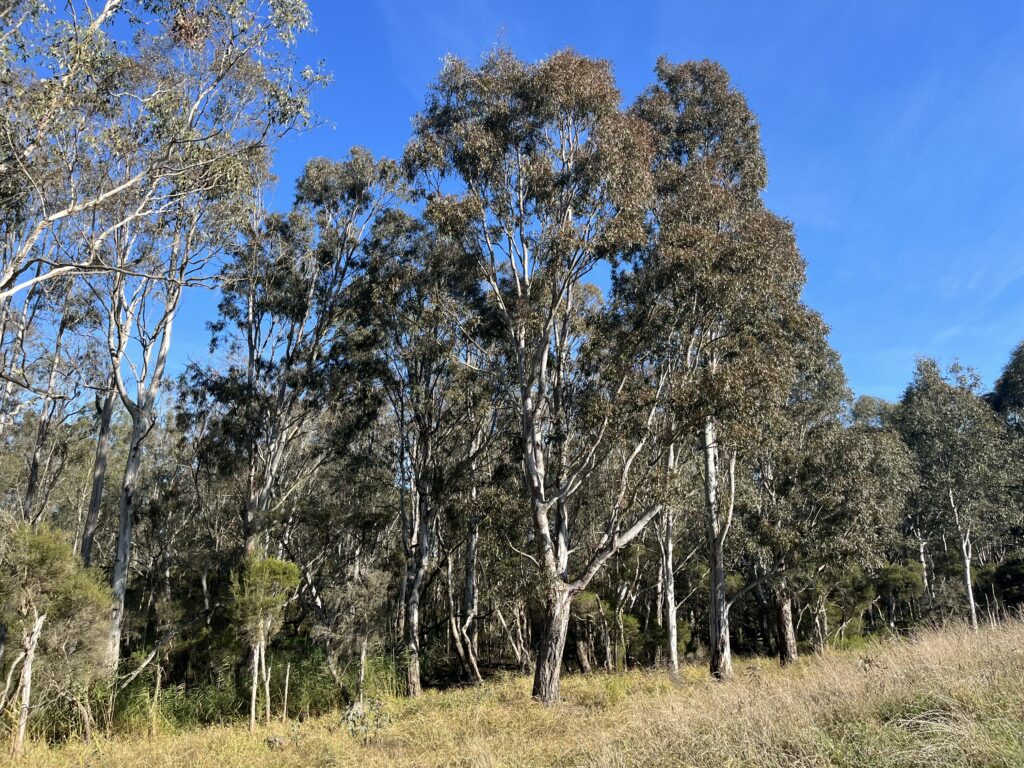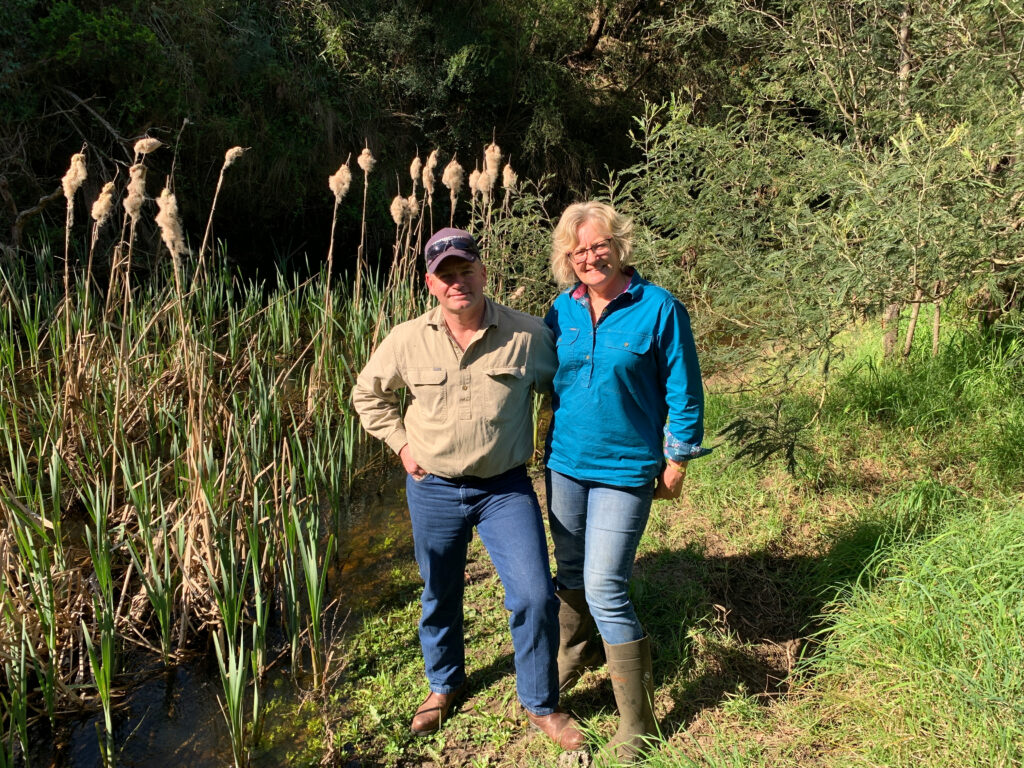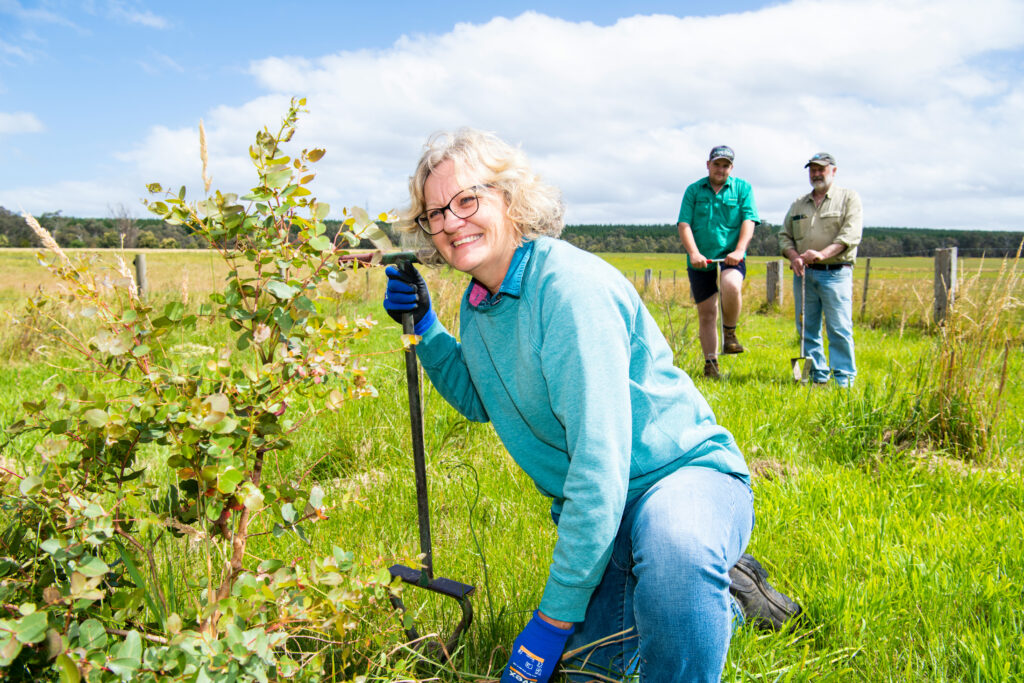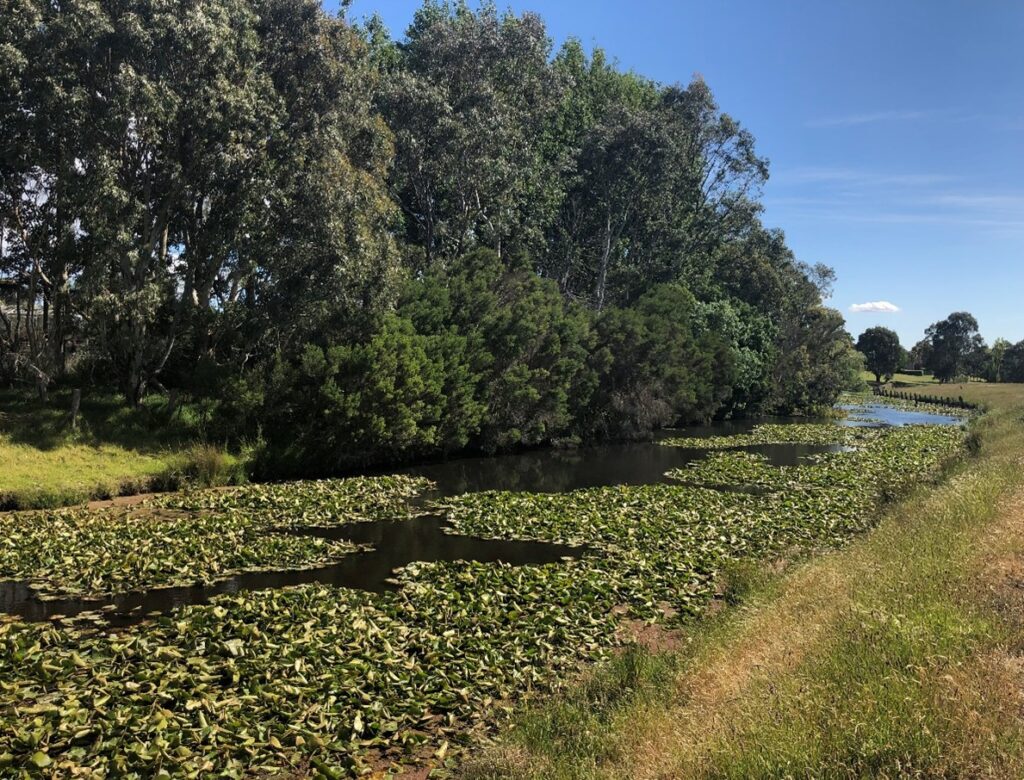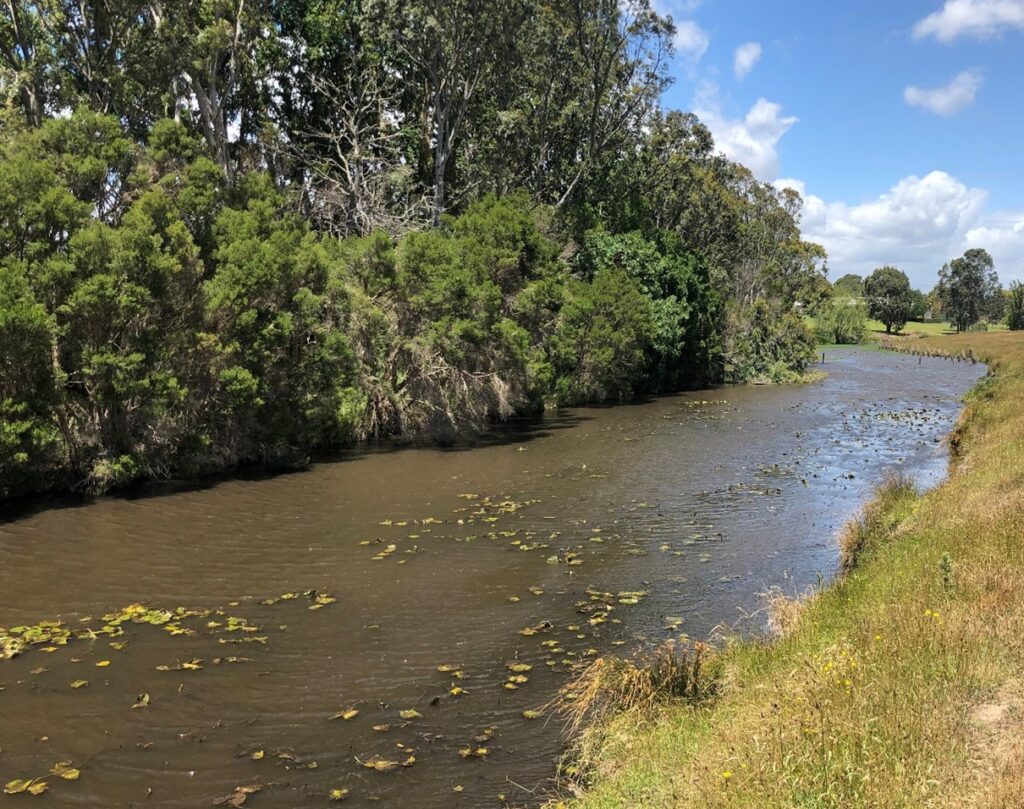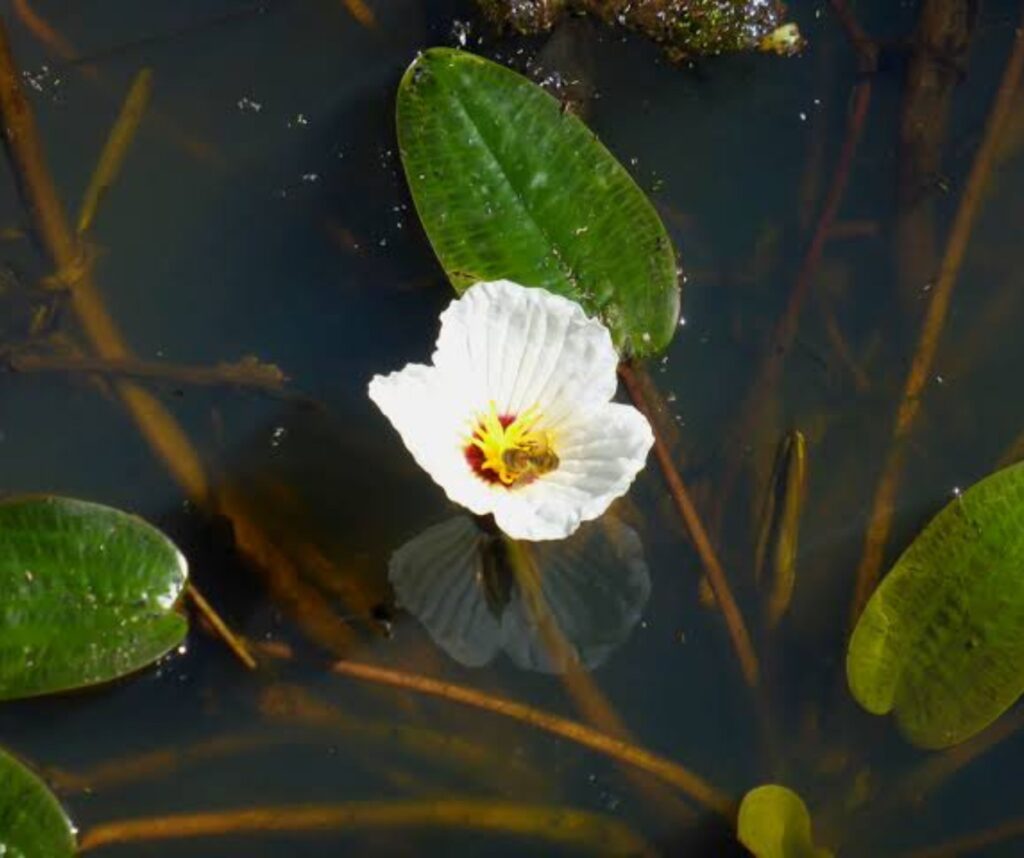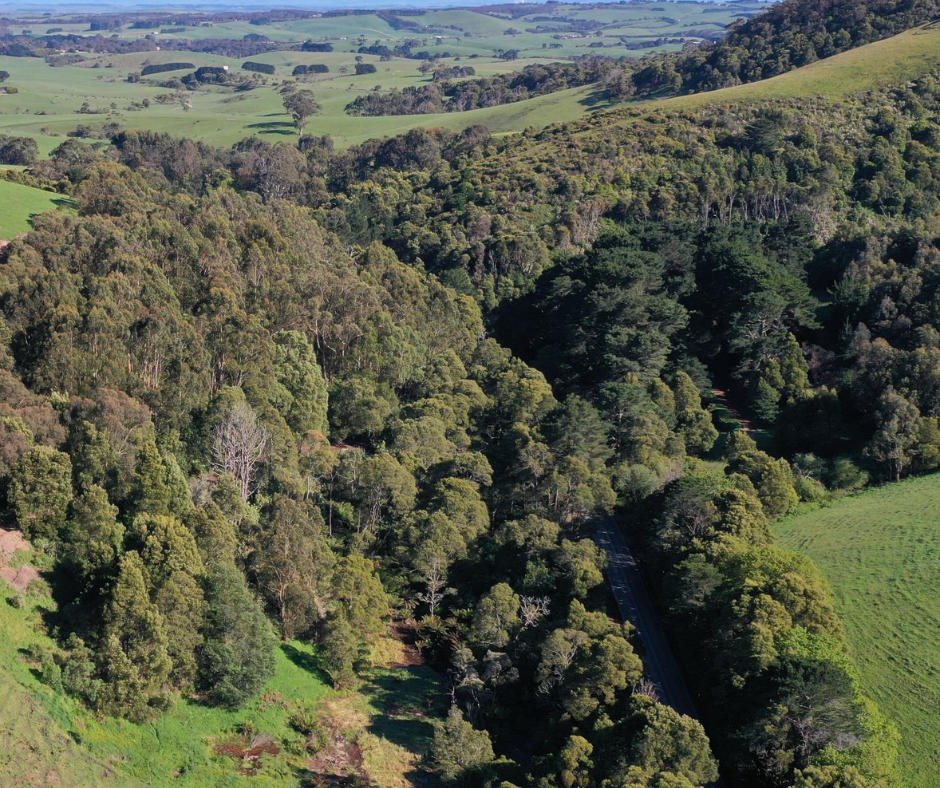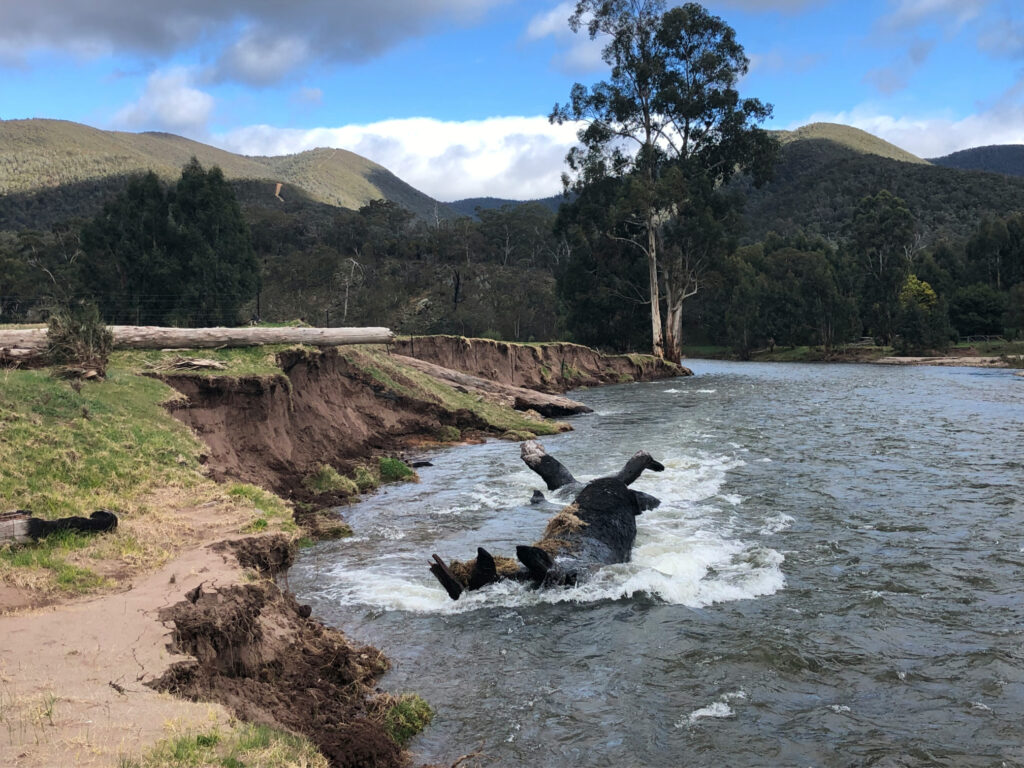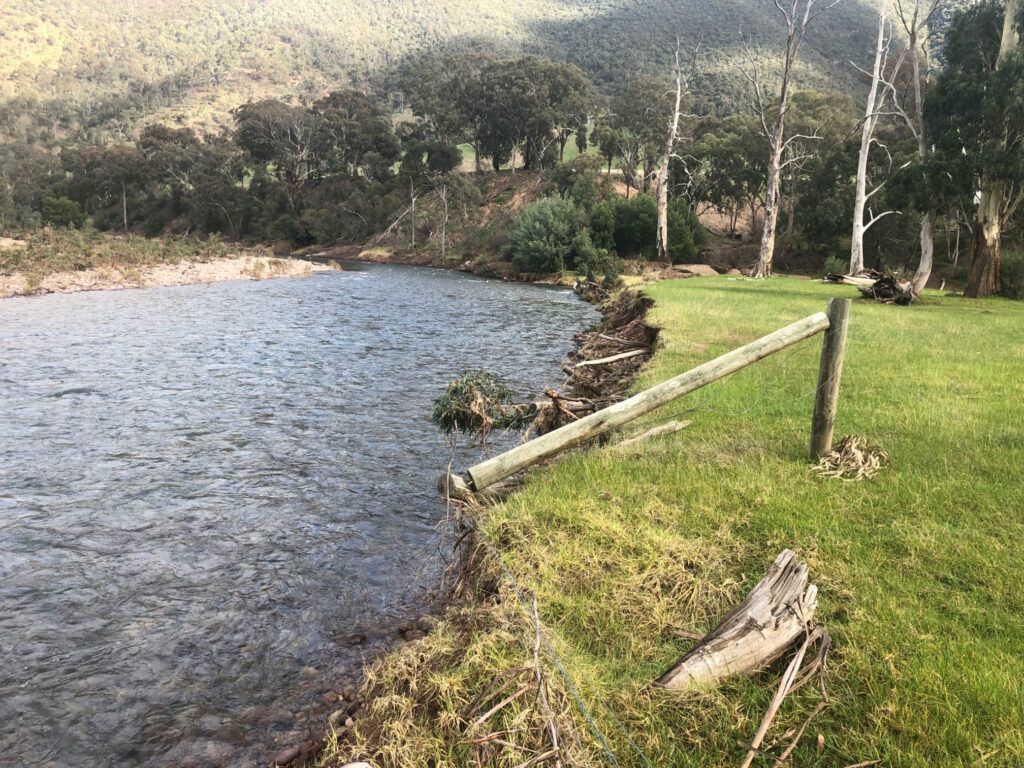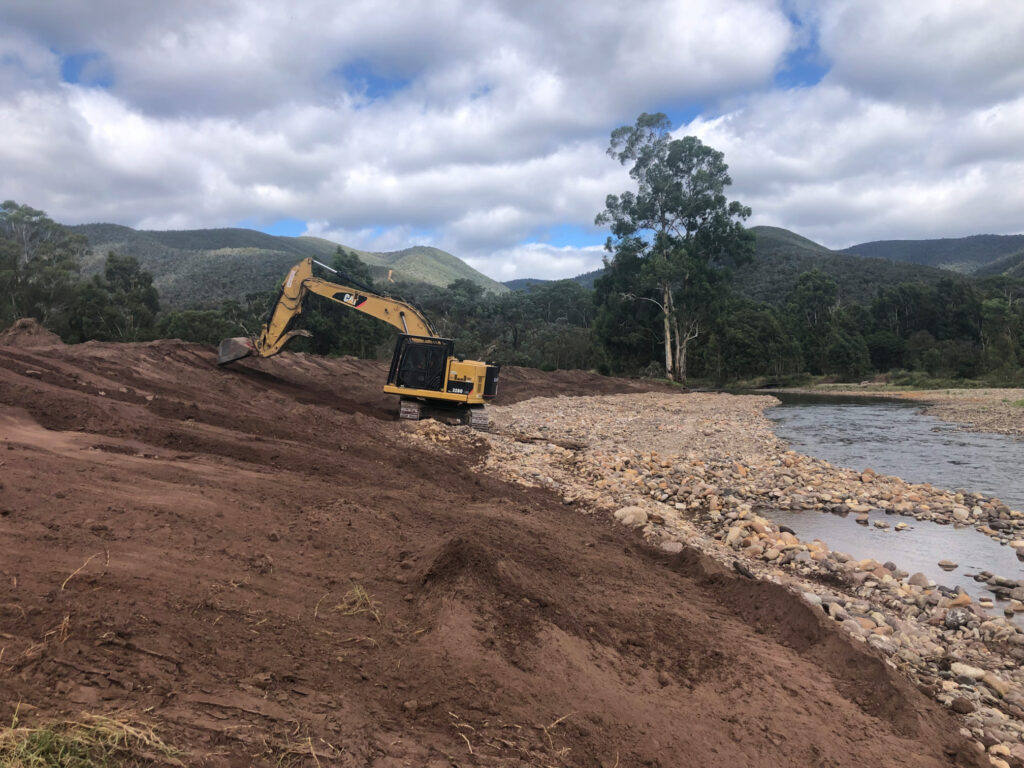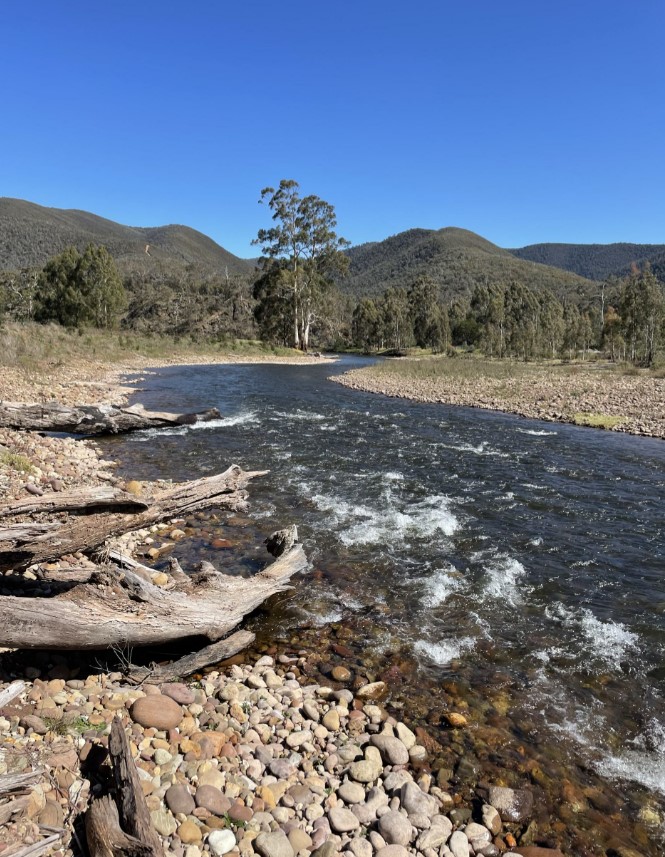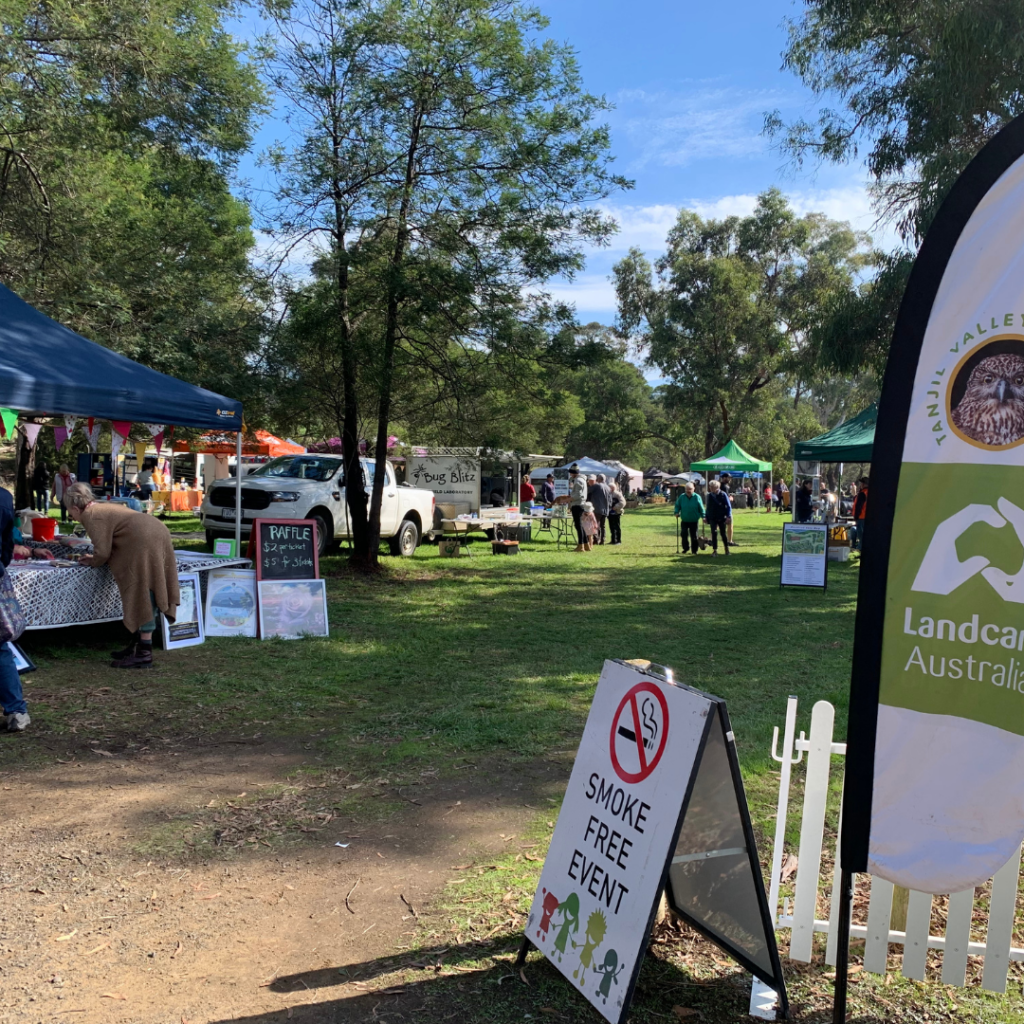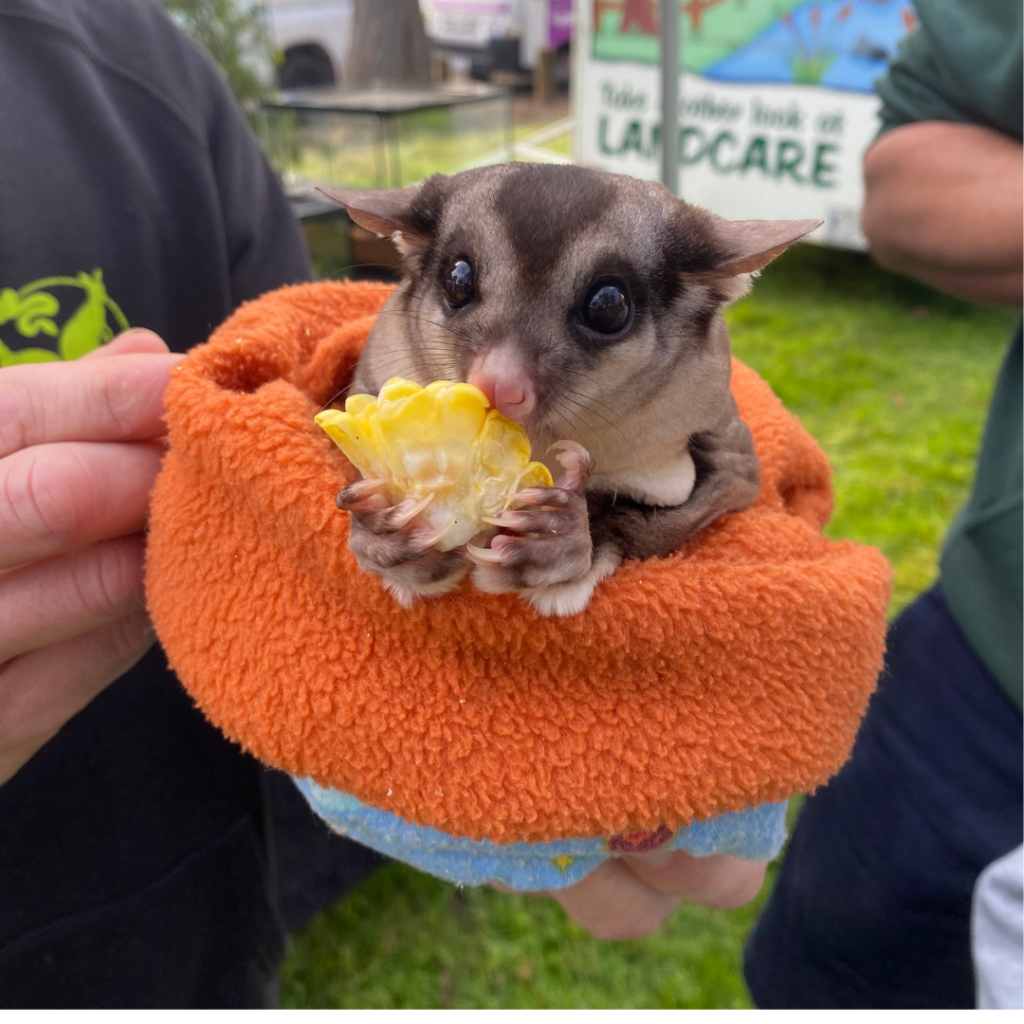Opening of Bourne Creek, estuary
West Gippsland Catchment Management Authority (CMA) has approved an artificial opening of Bourne Creek estuary, Kilcunda to prevent potential flooding of the Bass Highway.
The estuary opening is scheduled for Tuesday 3 September 2024 and will be undertaken by Parks Victoria when it is safe to do so, under the guidance of West Gippsland CMA.
Bourne Creek estuary entrance closed naturally to the ocean last week after large swells deposited sand across the estuary entrance. Those same swells caused water levels in the creek to rise.
“It’s a careful balance. Estuary closures are natural events that provide many environmental benefits for birds, fish and the surrounding saltmarsh and wetlands. However, they also pose risks to surrounding assets by inundating farmland, cultural assets, roads and recreational infrastructure,” said West Gippsland CMA CEO Martin Fuller.
“Artificial openings are only used in conditions where it is unlikely that the estuary will naturally open to the ocean before flooding occurs, as is the current situation at Bourne Creek.”
“The CMA is responsible for monitoring the closure conditions, carrying out the risk assessment and making the decision to artificially open the estuary.
This decision has been informed through extensive monitoring, a thorough risk and feasibility assessment and in consultation with Parks Victoria and Department of Transport and Planning. The opening involves a small digger removing sand at the estuary opening at a carefully selected time to allow water to flow into the ocean. The CMA will continue to work with landholders and partners to enable the natural opening and closing of estuaries with minimal impact top roads and other important assets.
“Ultimately, we are committed to supporting the environmental benefits of natural water cycles and improving the condition of West Gippsland’s valuable river and estuaries in the long term,” said Mr Fuller.
West Gippsland Community Flood Portal
Being prepared for how floods may affect you is part of a good flood preparation plan.
You may have heard Adam Dunn our Executive Manager, Statutory Planning on ABC Gippsland talking about our West Gippsland Community Flood Portal this morning.
The portal shares all the publicly available information and mapping with you in one place to help you plan and understand the catchment where you live. We recommend that you watch the instruction video to help get you started.
Remember for flood or storm emergencies, call Vic SES on 132 500. Stay safe everyone.
Creating better homes for fish in Lower Avon river
West Gippsland Catchment Management Authority (CMA) has completed a project on the lower Avon River on Gunaikurnai Country to understand resident fish populations, create more habitat for them to thrive and improve facilities for fishers and river users.
The project included fish surveys, adding woody habitat into the river, repairing fishing platforms and planting native trees and is part of the Love Our Lakes program of works made up of 48 projects, being delivered by 22 partners to protect and enhance the health of the Gippsland Lakes.
“The lower Avon River is becoming increasingly popular with recreational fishers,” said Martin Fuller, CEO of West Gippsland CMA.
“However, it was lacking woody habitat to support good healthy populations of fish, so we saw an opportunity to create additional instream habitat that will ultimately lead to better conditions for native fish to thrive.”
“This project not only benefits fish and the Gippsland Lakes environment – fishers and recreational users are winners as well with improvements to existing fishing platforms that are well utilised by anglers.”
To be able to measure the success of the project, West Gippsland CMA started by engaging researchers to undertake fish surveys using various methods including electro fishing. The surveys recorded Estuary Perch, Australian Bass, Bully Mullet and Flathead Gudgeon.
Next, hardwood logs were installed and pinned by vertical piles that were strategically designed to maximise habitat area and mimic the complexity and form of natural river snags.
Not just any logs, the timber was sourced from large trees that had fallen during extreme wind and flood events, and collected by Emergency Recovery Victoria.
“This is a great example of how two government organisations can work in partnership for good environmental outcomes,” said Martin.
Once the habitat was installed, the team turned their attention to repairing the fishing platforms and native trees provided the finishing touches to the site.
A second fish survey was conducted after the instream structural habitat was installed which showed the fish using their new habitat for feeding and shelter.
“Projects in this western most area of the Gippsland Lakes are aimed to improve Lake Wellington and its fringing wetlands,” said Elsa Burnell, Project Delivery Co-ordinator for West Gippsland CMA, who oversaw the project.
“The estuary is a beautiful interface between the Gippsland Lakes and the river systems. These unique inland estuaries can be very fresh in wet years and almost as salty as sea water in dry times. The animals and plants that live there are incredibly resilient – and these works support them to thrive.”
“These works will enhance not only the habitat values of the system but support recreational use and enjoyment of the area. Every time you go down there you see people camping, fishing and kayaking and connecting with the Lakes and rivers of this special place.”
This project is part of a $248 million investment by the Victorian Government to improve the health of waterways and catchments. Of this, $7.5 million is being provided to improve the health of Gippsland Lakes over three years (2021-2024), through delivery of on-ground works and community engagement which is overseen by the Gippsland Lakes Coordinating Committee.
Mapping Gippsland Lakes’ wetland vegetation
West Gippsland Catchment Management Authority (CMA) staff along with ecologist Doug Frood took the opportunity to survey the important and diverse wetland plants on Durt’Yowan (Latrobe River) floodplains as waters began receding after multiple wet years.
The surveys, undertaken on private land, are part of the Love Our Lakes program of works made up of 48 projects, being delivered by 22 partners to work together to protect and enhance the health of the Lakes.
As part of the Lower Latrobe Wetlands Flora and Fauna Monitoring, the project aims to map 3,576 hectares of vegetation and revisits existing vegetation monitoring undertaken in 2015. Results will monitor any change in condition of the sites and inform their ongoing management.
“This project will allow us to better understand the conditions of wetland vegetation within the Lower Latrobe area. It will also allow us to track the average condition of the vegetation and how cattle grazing and water regime impacts its quality,” said project consultant Doug Frood, from Pathways Bushland and Environment.
Results from the surveys will be included in the final report being prepared over the next few months and provide an invaluable resource that maps the vegetation and provides species lists for the lower Latrobe floodplain and lower Latrobe wetlands (Heart Morass, Dowd Morass and Sale Common).
In this latest study, the team set up ten metre by ten metre quadrants at two sites to record the plant species and their percentage of cover in the floodplain habitat. At one site, despite appearing reasonably bare and having evidence of cattle grazing, the team found a broad range of native plant species including water ribbon, slender knotweed, water milfoil and more. The second site featured a biodiverse floodplain woodland environment including additional species such as Swamp paperbark, prickly current bush and more.
“Lower Latrobe Wetlands make up a very significant fringing wetland for the Gippsland Lakes. The area’s plants, frogs and birdlife link to the world renowned Gippsland Lakes Ramsar wetland.”
“Surveying these woodland and wetland floodplain environments helps us to understand change in the native plants over time and also how they vary from season to season,” said Dr Adrian Clements, Environmental Water Officer for West Gippsland CMA.
“It’s really valuable to speak with the landholders to understand some of the changes they have noted over the years – especially the last four to five years which have seen the area flooded more often than dry,” said Dr Adrian Clements.
“This area of Durt’Yowan (Latrobe) has some of the best floodplain habitat in Gippsland and we’re keen to work with landholders to maintain and improve its condition for years to come, benefiting both the farmers and the environment.”
This project is part of a $248 million investment by the Victorian Government to improve the health of waterways and catchments. Of this, $7.5 million is being provided to improve the health of Gippsland Lakes over three years (2021-2024), through support to the Gippsland Lakes Coordinating Committee and for the delivery of on-ground works and community engagement.
Full details of the Gippsland Lakes projects are available at loveourlakes.net.au
Farmers adapting to a changing climate – Preparing for the next drought
The very real effects of climate change are a challenge for everyone. Merriman Creek Landcare Group is partnering with West Gippsland Catchment Management Authority and Food and Fibre Gippsland to face this challenge head on with a series of workshops to support farmers to prepare for and manage dry conditions.
“Two workshops have been funded through the Victorian Landcare Grants and West Gippsland CMA and Food and Fibre Gippsland,” said Sam Shannon West Gippsland Drought Hub Adoption Officer, who is providing in-kind support and funding to support the project.
David Hardwick delivered the first workshop to build a deeper understanding of soil health and how soil management can increase drought resilience.
“Improving the condition of soil can significantly improve drought resilience for any farming business, but especially those in areas with more fragile, shallow topsoils that are prone to wind erosion. This is why we were particularly keen to support soil health workshops in that Giffard/Stradbroke area,” said Sam.
Increasing soil organic matter will increase the water holding capacity of soil, enabling pasture to persist for longer and recover faster. Soil organic matter can also improve water infiltration rate, which can help to utilise those small rainfall events that may occur during a drought, helping with pasture persistence during dry times.
Building soil organic matter can be achieved in a number of ways, such as adding soil organic amendments, sowing multi-species pastures, incorporating plant material into the soil after harvesting crops or when renovating pastures, and through grazing management that allows residual plant material to decay back into the soil.
In the second workshop, Fiona Baker from Agriculture Victoria provided an engaging session designed to help farmers to develop a plan to manage dry conditions.
The plan focuses on setting ‘triggers’ as drought develops to activate measures to mitigate impacts, such as de-stocking livestock, retaining ground cover by using containment paddocks to reduce erosion and nutrient loss to waterways, and setting water and feed budgets for maintaining livestock.
“This preparedness and planning of such actions will also help to alleviate the mental health stresses faced by farmers and recently observed during the last drought. The development and use of such a plan will protect the landscape and guide farmers with their business decisions and would also be effective in a fire recovery situation,” said Sam.
The workshops respond to a very real need in the Giffard/Stradbroke area. “Our district suffered a horrendous three-year drought from 2017-2019,” said Melissa Ainsworth, Secretary of Merriman Creek Landcare Group.
“In response to seeing the effects that drought had on our landscape, farming families and their farm businesses, we applied for a Victorian Landcare Grant to facilitate these workshops to prepare for the next drought,” said Melissa whose family has been members of the group since 2008.
“These workshops are important to keep communities informed, resilient and supported with the key messages of the importance of soil health and need to change our farm management methods, according to the weather,” said Melissa.
“We learned about soil being a community of living organisms and the symbiotic relationship soil microbes have with plants. Soil is the foundation that determines food quality, land and water resources, not to mention social and environmental welfare. In an El Nino situation, we now have a Drought Management Plan to help conserve our precious soils to better sustain droughts and to minimise their impact.”
“Over the past 20 years the Giffard Plain area has endured three significant droughts the most recent, and by far the worst, in terms of severity and duration. With drought not being uncommon in Australia, and particularly in our local area, farmers need all the tools in their toolboxes to adapt to the changing climate,” Melissa concluded.
A third workshop is planned for late 2024.
These workshops are funded through the Victorian Landcare Grants that are administered through West Gippsland CMA and support Biodiversity 2037, the Victorian Government’s long-term plan to protect Victoria’s environment.
Keeping waterways open to enjoy
Keeping waterways open was the focus of an innovative project aimed at attacking an emerging weed that was threatening parts of Flooding Creek, Lavers Creek and lower Carran Carran (Thomson River).
Rowing, kayaking and boating are synonymous with the Port and waterways around the town of Sale at the western end of the Gippsland Lakes Ramsar wetland.
When Yellow Waterlily emerged in waterways around the town, it created a challenge for West Gippsland Catchment Management Authority (CMA) to tackle. The weed was posing a threat to the local environment as well as to access of the waterway by the community.
Yellow (Mexican) waterlily is a highly invasive weed found in slow moving waterways. The large underwater root mass lives in the waterways year round and in spring and summer, the above-water lily pads grow and spread. The pads block sunlight and reduce oxygen in the waterway and this impenetrable layer blocks access for any purpose – including recreation.
As the lily pads die off in autumn and winter, they release large amounts of nutrients into the waterway, reducing water quality and affecting animals and plants in the ecosystem.
“In 2019, we noticed large amounts of Yellow Waterlily growing in waterways in and around Sale,” said Elsa Burnell, Project Coordinator for West Gippsland CMA.
“This was the first time we had seen large amounts of Yellow Waterlily in water bodies connected to the main river system in Gippsland. It was particularly concerning because of the proximity to large high value recreational wetlands such as Sale Common and Heart Morass, which are areas in which the waterlily would thrive.”
“This weed has very few environmental values and presents significant challenges to the community use of these waterways.”
“The weed was also threatening to block parts of Sale Canal which is a popular rowing and boating area,” said Matt Bowler, Team Leader of Project Delivery for the CMA.
“Working with local authorities, West Gippsland CMA jumped at the chance to tackle the highly invasive weed and prevent further spread into the river system and nearby wetlands.”
The CMA initially mapped the Yellow Water Lily’s distribution and then engaged contractors to treat the weed by spraying the infestation in both spring and autumn over the following three years. Over 224 hectares of waterways were inspected and treated.
This will allow better access to the waterway for both the environment and community. Matt emphasised the weed is notoriously hard to control and keeping on top of it would be an ingoing process.
“The lily most likely escaped from plantings in private dams. While it’s a beautiful plant in domestic settings, it becomes dangerous when it enters public waterways – especially those so close to such a high value wetland as the Gippsland Lakes.”
This is a great example of working together to identify and tackle an emerging weed issue and this project will ensure rivers, creeks and wetlands are protected, preserved and enjoyed by families across Victoria.
This is one of three projects funded by the Victorian Government to enhance the recreational values of the State’s water resources and ensure our rivers, creeks and wetlands are protected, preserved and enjoyed by families across Victoria.
Putting the Fish back in Fish Creek
Five years after embarking on an ambitious catchment-wide restoration plan, Fish Creek Landcare Group are reaping the rewards of their hard work.
The Fish Creek Catchment Project began back in 2018 when local Landcare members felt that a more collaborative approach was needed to help improve the health of the entire catchment. An idea formed to develop a detailed plan that would give volunteers direction, focus and funding support for years to come.
To bring this plan to life, Fish Creek Landcare Group sought support from South Gippsland Landcare Network who helped them run a series of community workshops to collect inspiration and ideas, and develop them into key elements, guiding principles and strategic steps.
“This project brought so much enthusiasm to the table”, said Landcare member Joan Liley, who’s been living and farming in Fish Creek for over 50 years and has a background in natural resource management. “Even people who don’t own land have had the opportunity to give back to the environment in their own capacity.”
Partnerships also played a key role. The group engaged with a range of stakeholders including Traditional Owners, West Gippsland Catchment Management Authority, Greening Australia, South Gippsland Shire Council, local schools, Department of Energy, Environment and Climate Action, South Gippsland Water, GippsDairy and the Department of Economic Development, Jobs, Transport and Resources.
Five years later this active, dynamic Landcare group are seeing the benefits of their long-term, big picture planning.
They’ve successfully applied for Victorian Landcare Grants three years running, which has enabled the restoration of nearly all the riparian zones along the northern catchment between Fish Creek township and South Gippsland Highway. Efforts will now shift to weeding, planting and fencing along the southern catchment from Fish Creek down to Buffalo-Waratah Road.
Reflecting on the group’s achievements, Joan says the community collaboration has been amazing. “I’ve loved being a part of a project that the Fish Creek community are proud of”, she said.
Joan’s advice for other Landcare groups: “Have a plan, know your funding sources and use your partnerships and knowledge of strategic documents to apply for funding year after year.”
Discover more about Landcare in West Gippsland
Giving Gippsland Lakes freshwater wetlands room to move
West Gippsland Catchment Management Authority (CMA) is working with private landholders and partners to enhance water quality and reconnect freshwater wetlands to give them room to move along rivers flowing into Gippsland Lakes.
The project is now well underway and aims to improve the condition of priority fringing wetlands along the lower Carran Carran (Thomson), Wirn’Wurndook Yirrung (Macalister) and Durt’Yowan (Latrobe) river reaches.
“Works are being undertaken at sites around Sale that flow into Lake Wellington and the greater Gippsland Lakes System. Each has been identified as a priority for waterbirds and frogs,” said Martin Fuller, CEO of West Gippsland CMA.
“Planning for, protecting and increasing available freshwater habitat is essential for plants and wildlife to be able to move and seek refuge within the landscape.”
“The project will include ecological surveys, restoring priority areas through controlling weeds, fencing to keep out stock and planting of indigenous species to ultimately reconnect wetlands and waterways and protect floodplains and enhance these high value wetlands.”
“Preserving and improving these freshwater wetland sites upstream will help to build resilience to the pressures of climate change, rising sea levels and salinity in areas close to the Gippsland Lakes embayments and river estuaries.”
The sites along waterways that run into Lake Wellington and the Gippsland Lakes system, were chosen based on the Index of Wetland assessments and identifies areas that are priority wetland habitat that are providing refuge for wildlife.
Two wetland sites have been chosen on the Carran Carran (Thomson River), where fencing and planting is helping to alleviate erosion pressures and stabilise banks. The team recently worked to relocate a fence by moving it back 700 metres to protect an existing 1.6 hectares of floodplain vegetation.
The other two sites along Flooding and Lavers creeks contain important floodplain woodlands. On one property, the team removed woody weeds such as Hawthorn from around a farm dam and repaired fences to keep out stock. Winter plantings of over 6,000 trees will reconnect the wetland with the creek.
The preservation and enhancement of freshwater wetlands is a high priority, particularly in response to climate change, rising sea levels and salinity in wetlands closer to the Gippsland Lakes.
This project is being delivered through by West Gippsland CMA as part of the Love Our Lakes program – part of a $248 million investment by the Victorian Government to improve the health of waterways and catchments. Of this, $7.5 million is being provided to improve the health of Gippsland Lakes over three years (2021-2024), through support to the Gippsland Lakes Coordinating Committee and for the delivery of on-ground works and community engagement.
Find out more about the Love our Lakes program.

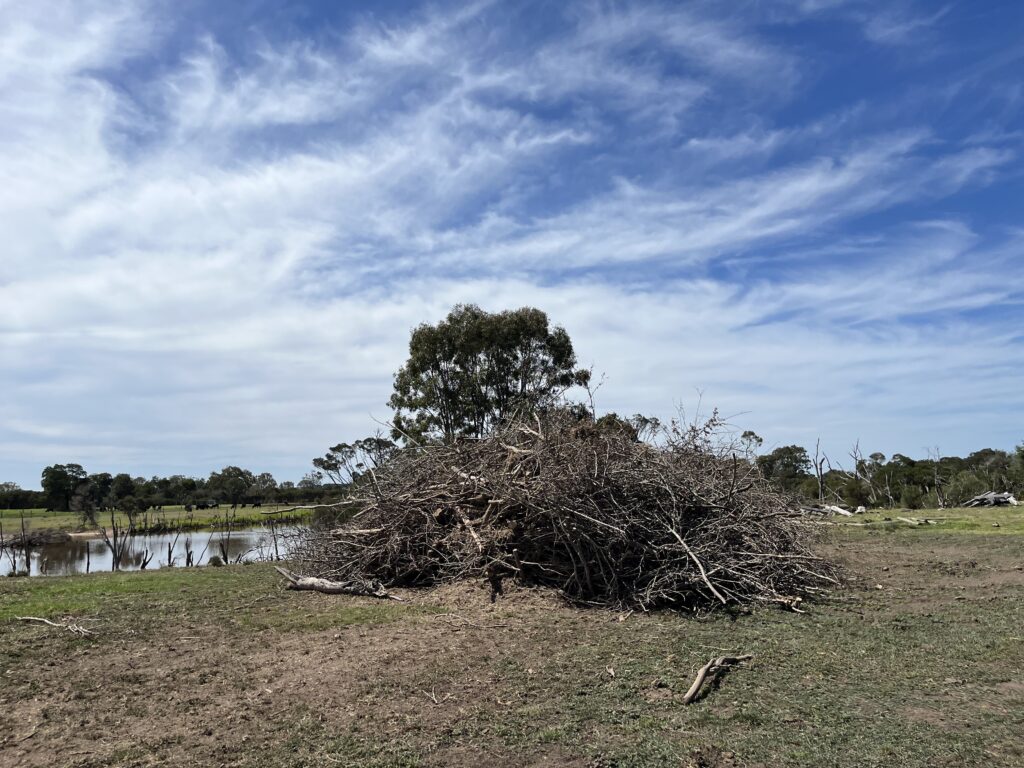
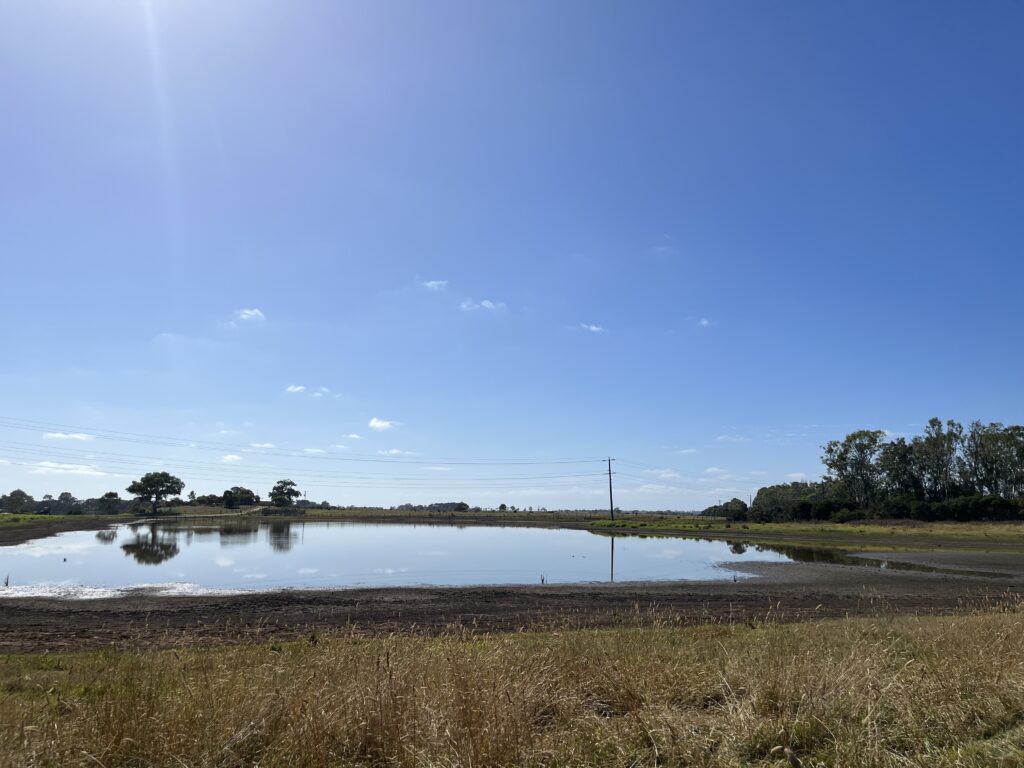
Building flood resilience naturally
After the June 2021 floods subsided, property managers at Glenfalloch Station (near Licola) swung into action to repair the damage to the waterway with the help of West Gippsland Catchment Management Authority.
The team used their experience of previous floods to achieve the best results by working with natural materials and processes, focusing on long-term resilience and ‘allowing space for the river to move’.
Glenfalloch Station (Gunuaikurnai Country) is a major agricultural property located at the base of the Alpine National Park near Licola in West Gippsland. It includes 23 kilometres of Wirn Wirndook Yeerung (Macalister) wild river frontage.
The one-in-30-year-flood event of June 2021 dumped 250 millimetres of rain to the region in 24 hours, and saw the river rise to 4.2 metres in some parts.
When the floodwaters subsided, Karen Tymms, Environment Manager at Glenfalloch Station and Elsa Burnell, Project Coordinator for West Gippsland CMA, got to work. The river is prone to flooding and the team has worked with the CMA on flood recovery works before to protect and maintain the health of the waterway.
“When we first went up there after the 2021 floods, we were probably expecting more damage,” says Elsa.
“But we noticed that works done after the 2007 flood had held up really well,” said Karen.
They started by assessing the damage, then planning and undertaking recovery works.
Once the wet weather eased and river levels were low enough, the team began their work stabilising the most severely eroded sections of riverbank. Up to 200 metres of raw, vertical bank was smoothed into a gentle slope using a technique known as ‘battering’.
Logs and woody debris washed down by the floodwater were also salvaged from the paddocks and dug into the bank to help stabilisation. These natural materials provide ideal habitat for frogs and fish, further enhancing the health of the river.
The most critical step in flood recovery, according to Elsa, was what came next.
“All the works we do such as bank stabilisation, weed removal and fencing is preparation for putting plants in the ground – it’s the culmination of the project. Trees and shrubs provide the essential last step in flood recovery, acting like the reo in concrete to stabilise banks and to slow the water down in future flooding events. Almost 7,000 plants were planted across the flood affected sites”, said Elsa.
After 18 months, the repaired sites were in a strong shape to withstand future floods, with the banks stable and revegetation growing strongly.
Farming on the mighty Macalister
Karen says what’s interesting about major floods is seeing how the river moves, and where the tributaries flow afterwards.
“The Macalister is a dynamic river, so it has the tendency to move.”
Sometimes damaged fences need to be realigned rather than simply put back in the same place, which is what happened after the 2021 event.
“We did recalibrate one of the fences after seeing where the flood had gone,” said Karen.
A total of 3.2 kilometres of fencing was repaired or realigned as part of the June 2021 flood recovery works.
Building flood resilience
The waterway at this site was impacted further in October 2023 from another major flood event.
“Some of the woody debris we dug into the banks had shifted a bit but there was no major channel change, and the battered banks and young revegetation held up really well,” said Elsa.
She says that this focus on resilience and health of the river is testament to a sustainable, long-term approach to flood recovery championed by Karen and the Glenfalloch team.
“It’s great to work with property owners who understand the river as a dynamic system. These days we try to stay away from rock armouring every eroding bend. While still a valid approach, we often see that this just shuffles the problem down or up stream. Working with landholders who are keen to work with the river and implement nature-based solutions is just really awesome.”
Flood recovery works to repair damage to the existing waterway health works along the Macalister River at Glenfalloch were funded by the Department of Energy, Environment and Climate Action (DEECA).
Festival fun for nature lovers
Tanjil Valley Landcare Group are onto a winning formula with their community and environment festival drawing a crowd for the second year running.
Over 500 locals and out-of-towners flocked to Blue Rock Lake in Willow Grove on Sunday 28 April to celebrate and explore nature with family and friends at the Tanjil Valley Community Festival.
Landcare member Caroline Hammond says the aim of the event was to raise environmental awareness and give people a chance to connect with nature.
“We were excited to see so many families visit the festival and make the most of the environmental activities and play during the day,” Caroline said.
Over 30 stallholders including Bug Blitz, Aussie Wildlife Display, Wildlife Rescue and Protection and Kids Nature Play showcased displays and activities designed to engage children and adults alike. Highlights included an environmental treasure hunt, storytelling, tree planting and cubby-building using natural materials.
Music performed by local musicians added to the atmosphere of the day, while volunteers from Willow Grove Lions Club, Willow Grove Primary School and the local kindergarten and playgroup provided catering and helped run activities such as face painting and art, all with an environmental focus.
Representatives from Gippsland Climate Change Network and were also on-hand to chat about sustainable living and renewable energy.
“The festival was a wonderful display of community spirit and a fantastic opportunity to highlight the unique land, water, cultural and biodiversity assets of the area,” said Marnie Ellis, West Gippsland’s Regional Landcare Coordinator.
“We congratulate the Tanjil Valley Landcare Group volunteers on their efforts supported through a Victorian Landcare Grant along with hard work and passion.”
The 2024 festival was organised by the Tanjil Valley Landcare Group in partnership with the Hill End Community Incorporated and builds on the success of the inaugural event in 2023, which also attracted large numbers.
Find out more about Landcare in your area across West Gippsland.
The project was funded by the Victorian State Government through the 2023 Victorian Landcare Grants.
